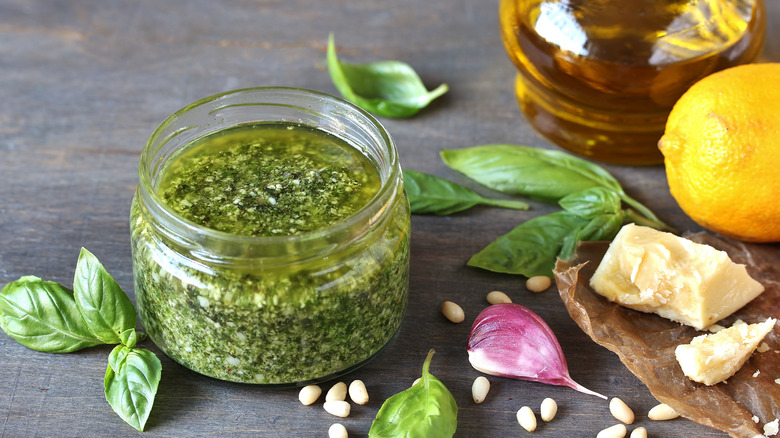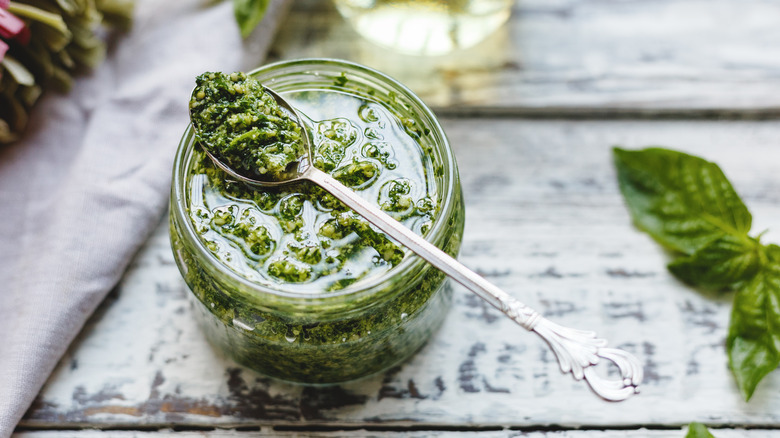The Olive Oil Trick To Stop Leftover Pesto From Turning Brown
It's hard to imagine life without pesto. Appealing in both flavor and appearance, the herbaceous and traditional Italian sauce enhances everything from crispy pan-fried gnocchi to a bright Caprese panini. Standardly made with garlic, olive oil, pine nuts, Parmesan, and basil, it boasts a vibrant green hue and a rich, nutty flavor. Unfortunately, both are often disappointingly dimmed by browning.
If you've ever made pesto from scratch, you may have noticed the sauce loses its color and turns unappetizingly brown shortly after being spooned from the food processor. While it's easy enough to prepare, preserving its pleasant shade of olive green requires a special touch. Turns out, the browning is caused by a chemical reaction. As basil is chopped up, an enzyme is released, resulting in oxidation when the herb is exposed to the air. The process affects all kinds of produce, from bananas to avocados, and is commonly slowed with a little acidity. But if you're planning to store pesto, a squeeze of a juicy lemon might not be enough to keep it bright green. Instead, turn to a bottle of olive oil.
Whether you're popping a jar of homemade pesto in the fridge or freezer, olive oil is the best way to prevent it from browning. A small amount of the oil can be used to stop the sauce from oxidizing while stored, without impacting its flavor. Intrigued? Here's what you need to know to test out the trick on any leftover pesto.
Preserve pesto's vibrant color and flavor with a layer of olive oil
While it's best to avoid adding oil to pasta water, it can make or break your pasta sauce — particularly pesto. The savory green stuff is sensitive to oxygen, changing color as it comes into contact with the air. However, storing pesto in an airtight container isn't enough on its own. That's where oil comes in.
To stop it from browning, pour a thin layer of olive oil over the top of leftover pesto. By covering the surface of the sauce, the oil will serve as a sort of seal, preventing it from oxidizing. This simple hack is especially effective if you're freezing the sauce in an ice cube tray — a convenient way to pre-portion the sauce for future dishes. With its protective coat of olive oil, pesto is more likely to retain its color and resist freezer burn for up to six months of storage.
If you're not particularly peckish about pesto changing color, you might be wondering what the fuss is for. Unfortunately, browning doesn't only affect its appearance, but it can also change how pesto tastes. Oxidation can cause the sauce's fresh flavors and aroma to become muted or slightly funky. While not dangerous, this unappetizing effect is worth avoiding if you want to fully savor leftover pesto at a later date. So, next time you need to store pesto, add a little olive oil to keep it looking and tasting as fresh as possible.

